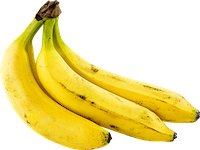Or search by topic
Number and algebra
Geometry and measure
Probability and statistics
Working mathematically
Advanced mathematics
For younger learners
Healthy Snack Shop



- Problem
- Getting Started
- Student Solutions
- Teachers' Resources
Healthy Snack Shop
 You are setting up a healthy snack shop for your class.
You are setting up a healthy snack shop for your class.
What information do you need to know to make the healthy snack shop work well?
Talk to someone else about your ideas and make a list of questions.
Choose one of the questions to focus on. How will you find out the answer?
How will you collect data to help answer your question?
How will you present the data?
How will you use the data to answer your question?
Now carry out your plan!
We would love to hear about your ideas, the question you asked, and how you answered it. Please do send us pictures to show how you presented your data too.
Why do this problem?
This task offers children a context in which they can pose their own question, collect and present the data needed to answer it, and then interpret the data to find out the answer. You may find it useful to set aside more than one lesson for this activity.
Possible approach
Offering a motivating context as the basis for data handling is an approach advocated by Alan Graham, and you can read more about his four step model (which we suggest below) in our article P is for Posing.
Although this task has been framed in terms of a healthy snack shop, the key point is offering a context that will appeal to your learners. Ideally, it will be real so that the whole process has a meaningful purpose and outcome.
Begin by introducing the context, and allow time for learners to talk in pairs about the kind of information they need to know. As a whole group, gather everyone's questions on the board. Try to value all contributions equally at this stage. You may find your pupils suggest questions such as:
- What healthy snacks should we sell?
- How much should we charge?
- Where shall we have our healthy snack shop?
- What shall we do with any money we make?
But they will have lots of ideas which we simply cannot predict!
Once you have a list of questions, facilitate a discussion about how you might answer each one. At this point, it will become apparent that some questions will be much harder to answer than others for all sorts of reasons, and you might also find that a question actually becomes a different question, or more than one question. For example, 'what healthy snacks should we sell? might become 'which kind of fruit is most popular in our class?'. Try to keep track of this on the board for all to see.
After some time, you will have a list of questions on the board which could be investigated by the class. You could invite pairs of pupils to choose one of the questions and allow some time for them to discuss how they are going to collect the data needed to answer that question. Suggest that each pair makes a plan (this doesn't necessarily need to be recorded, but if the period of data collection is not following on immediately from the planning time, it might help to jot points down to serve as a reminder).
It is up to you how you facilitate the data collection. Assuming that data will be collected from members of the class orally, you could split the class into two groups so that each pair is also split up. Allow time for one group to ask questions of the other group, then swap over.
Having collected their data, pairs can now decide on how to represent it. It may be appropriate to have a mini plenary to talk about ways they know and how they might decide which is 'best' for their particular data set.
Each pair can then use their presented data to answer the question they chose. You could invite each pair to share their interpretations of the data with the whole class, so that the whole class is aware of everyone's findings. You may find that more questions are raised and so the whole process begins all over again!
Key questions
How will you find out the answer to your question?
How will you collect the data you need?
How will you present the data?
How will you use the data to answer your question?
Possible support
All learners might benefit from using appropriate IT, depending on their experience.
Possible extension
You can encourage learners to investigate another question, whether it is one that was posed initially or one that has arisen from their own data collection and interpretation.
You may also like
Real Statistics
Have a look at this table of how children travel to school. How does it compare with children in your class?
Compare the Squares
In this problem you will do your own poll to find out whether your friends think two squares on a board are the same colour or not.
Three Spinners
These red, yellow and blue spinners were each spun 45 times in total. Can you work out which numbers are on each spinner?

